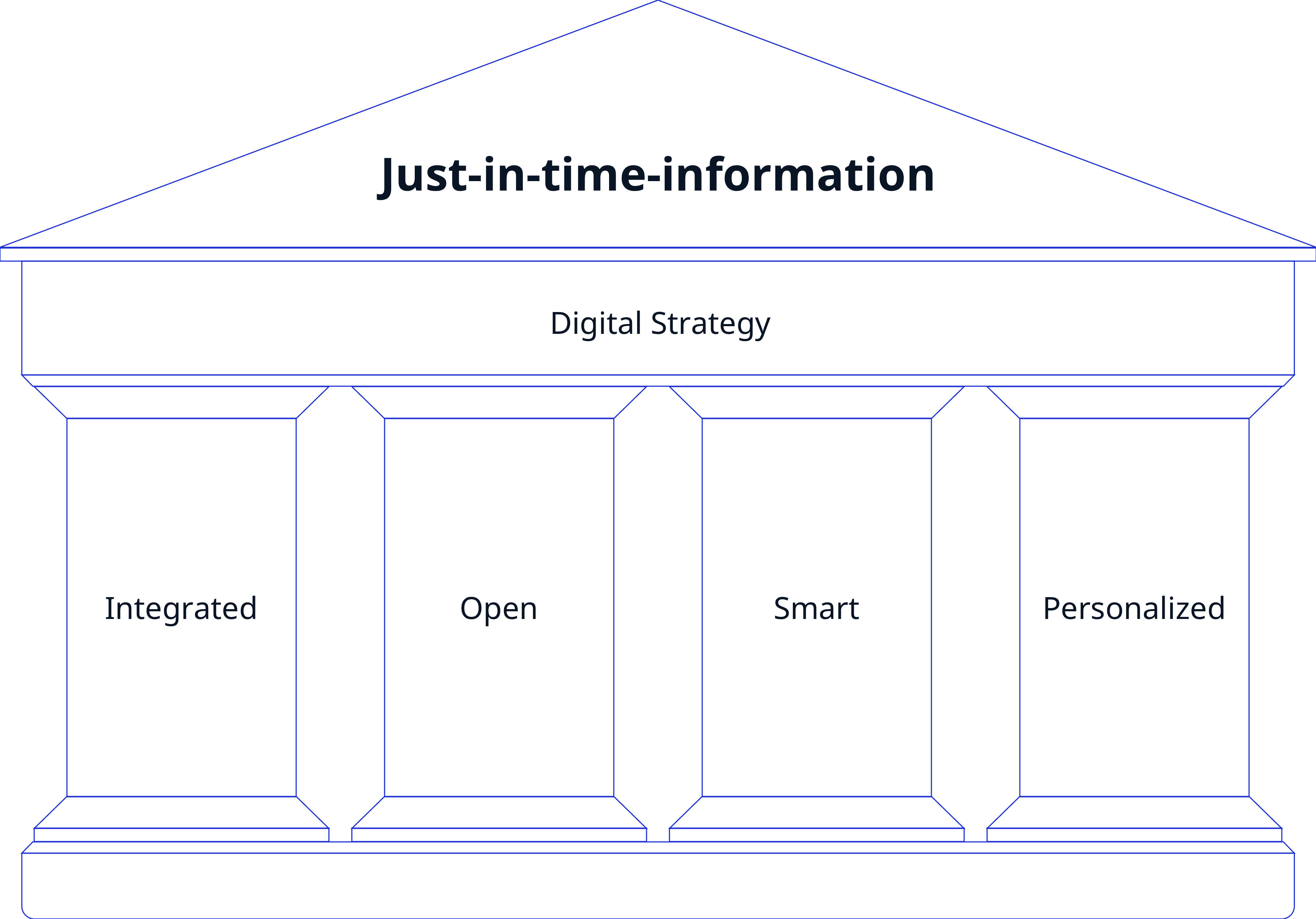Providing personalized, integrated, open, and smart information to all internal and external stakeholders, just when and where it’s needed.
In the first blog about Just-In-Time-Information (JITI), we explained the concept of JITI. In this blog, we’ll share the four pillars to success with you.
At Mendix, we see four conditions for successful JITI within your organization. Your information should be integrated, open, smart, and personalized. These four conditions can be seen as the four pillars that can drive your digital strategy in order to achieve JITI. The four pillars rest on a firm foundation of information technology best practices. You can work on pillars separately and all are equally important. For each person in a process, you want to ask yourself whether the information meets these four conditions for maximizing the value of information at that part of the process.

Pillar 1: Integrated
Information should always serve the decisions you need to make at each step of a process. Processes transcend systems and systems shouldn’t limit the information you see. For example. as a mechanic, you fix an asset by replacing a part. Your employer’s processes require you to update the information in the organization’s product lifecycle management (PLM) system, warehouse management system (WMS), and ticketing system. As a mechanic, you shouldn’t need to be familiar with these different systems and ought to be able to update these systems via one interface with a couple of clicks. A fully integrated landscape allows you to compose and harmonize business processes, adapting them if needed in real-time, using all the information available in your organization.
Pillar 2: Open
Information in your organization is your competitive advantage and you should be careful when sharing it. However, in the current dynamic, open and globalized world, you’re missing opportunities if your focus is solely internal. Information could provide services to your customers or even create whole new business models that generate new revenue streams. For example, ourcustomer Mitsubishi for enables a new licensing business model with our applications providing performance insights. Sharing information and cooperating with your entire value chain (with organizations such as suppliers, regulatory or logistical organizations and ultimately your customers) could be tremendously beneficial as well.
Pillar 3: Smart
Information should be available in real-time, online and offline, on any device in an intuitive and modern front-end. Smart information means that all available data and technologies are used to only show you the actionable and valuable information you need at that moment and location. Advanced technologies such as machine learning can be used to recognize patterns and create proactive alerts. For example, knowing well in advance that an asset will be overheating in a couple of weeks. By applying such technologies, our customers do more work with fewer people and provide more value to their customers.
Pillar 4: Personalized
As an end-user, you want to see the specific information that is valuable to you at that moment in the process. The information should be minimal – just the information your role needs to see at that step in the process. Information should be context-aware; you see the data of the asset you are standing next to. It could be even more valuable if it supports the multiple languages of your workforce and adjusts to each individual’s experience level. By personalizing information to the immediate needs of the individual at each process step, productivity and value are optimized.
Summary
Information is at the core of today’s organizations. Making the best use of it can significantly improve workflows, productivity, and communication between different people. It can even generate new business models. At Mendix, we see that the way organizations handle information varies significantly, yet it’s quite clear that those applying the four pillars of Just-in-Time-Information are winning significant benefits and are often the most successful in their respective industries. When JITI is applied successfully, you’re able to provide personalized, integrated, open, and smart information to all internal and external stakeholders, just when and where it’s needed.
As business processes transcend systems, it’s key to move away from thinking in information silos with raw data. JITI allows organizations to create a digital strategy that focuses on generating time and context-relevant information to support business processes. The art of pursuing JITI is to forget your current IT landscape for a moment and focus on the goals of the business. Then you can define what information is needed to support the pursuit of those goals and how to get there.
JITI for better Field Service Management
For more information about applying JITI to Field Service Management, download our eBook ‘Let’s make it better, together. Just-in-Time-Information for better Field Service Management.’

